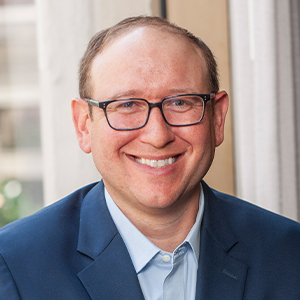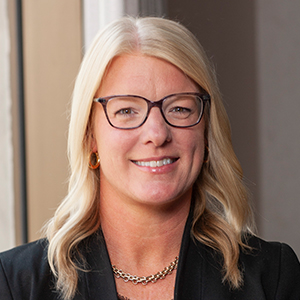What types of bonds fare best following yield curve inversions
A funny thing happened to the U.S. Treasury yield curve recently.

Normally, when the growth rate of the American economy is strong and accelerating, the slope of the yield curve is positive—that is, the longer the security’s maturity—measured in time on the horizontal axis—the higher its yield—measured in percentage points on the vertical axis.
However, as the outlook for the economy begins to dim, investors tend to bid up the prices of longer-term government bonds—among the more effective portfolio hedges against deflation risk—which drives down the yields of those longer-term government bonds. When the yield of a longer-term security drops below the yield on a shorter-term security, the portion of the yield curve that resides between those two maturities is said to be inverted—negative, or downward sloping. Historically, an inverted yield curve has been one of the most reliable harbingers of stock market peaks and economic recessions in the United States; the yield curve inverted before each of the past seven recessions, and it produced only one false signal in that half-century span.¹
Until recently, the yield curve had remained positive throughout the current business cycle; however, the 3-month to 10-year portion of the curve inverted for five consecutive trading days, beginning on March 22, 2019. The spread between the yields on 3-month and 10-year U.S. Treasury securities also turned negative prior to each of the past two recessions, with both yield curve inversions anticipating peaks in the stock market.² While bonds typically fare better than stocks once the cycle turns, some types of bonds tend to do better than others after the yield curve inverts.
“Historically, an inverted yield curve has been one of the most reliable harbingers of stock market peaks and economic recessions in the United States.”
Promising areas for bond investors following yield curve inversions
That last time the 3-month to 10-year portion of the curve inverted, before the 2008 global financial crisis, an intermediate-term bond strategy was among the best places for investors to be: From the point of inversion in July 2006 to the S&P 500 Index’s trough in March 2009, the average intermediate-term bond fund posted a positive 0.55% annualized total return while most other asset classes—even within fixed income—suffered losses.³
The turn of the prior cycle—the end of the tech bubble—also shows intermediate-term bonds in a favorable light: From the point of inversion in August 2000 to the S&P 500 Index’s trough in October 2002, the average intermediate-term bond fund category posted a positive 8.66% annualized total return, just behind its close cousin, the corporate bond fund category, while most other asset classes didn’t do nearly as well.³

Averaging the turns of these last two cycles together puts the intermediate-term bond fund category—the only one in positive territory for both periods—squarely at the top of the list, revealing the desirable effects of duration during down legs of the market cycle. In fact, the intermediate-term bond fund category outperformed the ultrashort bond fund category by an annualized average of 284 basis points.³ Longer duration exposure tends to fare better than shorter duration exposure in such moments since yield curve inversions are driven by rising shorter rates, falling longer rates, or a combination of both.
Preparing for a sustained yield curve inversion
While an inverted yield curve lasting several weeks has been a reliable predictor of the business cycle’s end, an inversion lasting only a few days isn’t necessarily a clear signal pointing to impending trouble. Fleeting yield curve inversions, such as the one we saw in March, concern us much less than those that persist. Still, the mere existence of a yield curve inversion itself—however brief—does lend support to our view that we’re in a late-cycle environment. Since March’s brief yield curve inversion, the curve has steepened somewhat, offering investors a second chance to increase duration. An examination of the historical data suggests that a yield curve steepening following a momentary inversion—but before a more sustained yield curve inversion materializes—has represented attractive time to add duration.⁴
“Still, the mere existence of a yield curve inversion itself—however brief—does lend support to our view that we’re in a late-cycle environment.”
If and when the yield curve inverts again—and remains inverted for weeks rather than days—our conviction would likely grow that a market peak, paired with a possible recession, might be around the corner. With that in mind, emphasizing intermediate-term bonds right now seems like a shrewd late-cycle investing move.
1 Manulife Investment Management, 2018. 2 Treasury.gov, 2019. 3 Morningstar Direct, 2019. 4 FactSet, 2019.
Important disclosures
Views are those of Emily R. Roland, CIMA, head of capital markets research, and Matthew D. Miskin, CFA, market strategist, for John Hancock Investment Management, and are subject to change. This commentary is provided for informational purposes only and is not an endorsement of any security, mutual fund, sector, or index. This material does not constitute tax, legal, or accounting advice, and neither John Hancock nor any of its agents, employees, or registered representatives are in the business of offering such advice. Please consult your personal tax advisor for information about your individual situation. No forecasts are guaranteed, and past performance does not guarantee future results.
The S&P 500 Index tracks the performance of 500 of the largest publicly traded companies in the United States. It is not possible to invest directly in an index. ©2019 Morningstar. All Rights Reserved. The information contained herein: (1) is proprietary to Morningstar and/or its providers; (2) may not be copied or distributed; and (3) is not warranted to be accurate, complete, or timely. Neither Morningstar nor its content providers are responsible for any damages or losses arising from any use of this information.
MF828494







